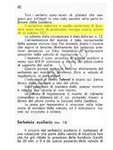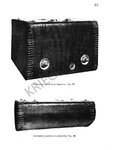Shortround6
Lieutenant General
The book "America's Hundred Thousand" isn't exactly clear on this either. For the P-40, P-40B, and P-40C it gives fuel capacities of 180 gal, 160gal, and 135gals respectivly for fuel system weights of 171lbs, 253.4lbs and 420lbs.
The D-E versions are listed at 148-9 gals for fuel system weights of 425-437lbs. The weights are supposed to be from individual aircraft and so may reflect production tolerances/variation.
Armor weights for the P-40,P-40B, P-40C, P-40E are given as 0lb, 93lbs, 93lbs and 111lbs, this includes bullet proof glass. Armor weights for later models is included in the "armament provisions" catagory and so is harder to break out.
These are for US models and might not truely represent the British/lend lease versions?
The D-E versions are listed at 148-9 gals for fuel system weights of 425-437lbs. The weights are supposed to be from individual aircraft and so may reflect production tolerances/variation.
Armor weights for the P-40,P-40B, P-40C, P-40E are given as 0lb, 93lbs, 93lbs and 111lbs, this includes bullet proof glass. Armor weights for later models is included in the "armament provisions" catagory and so is harder to break out.
These are for US models and might not truely represent the British/lend lease versions?


